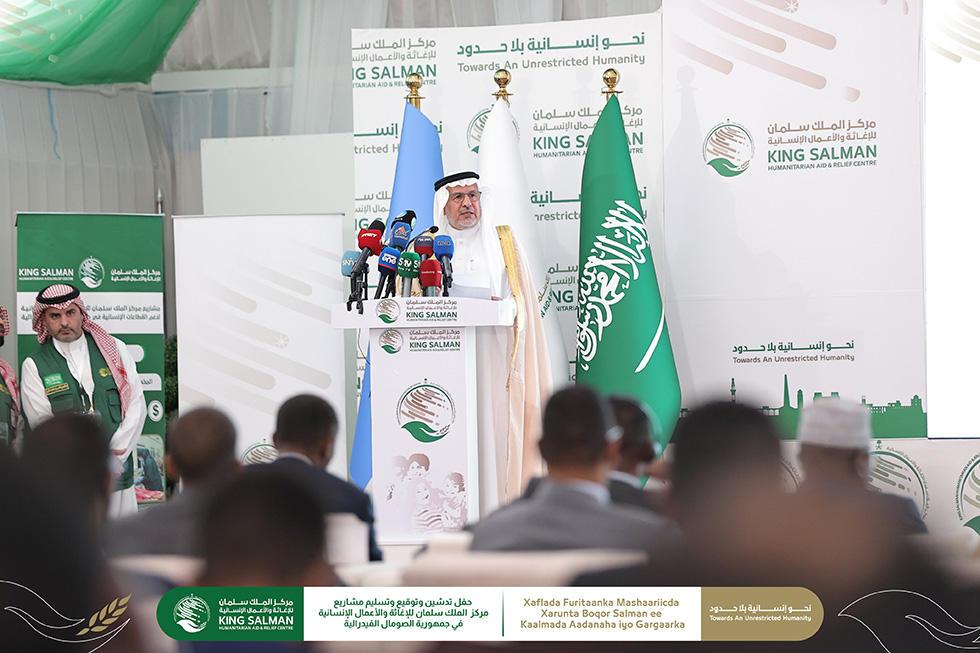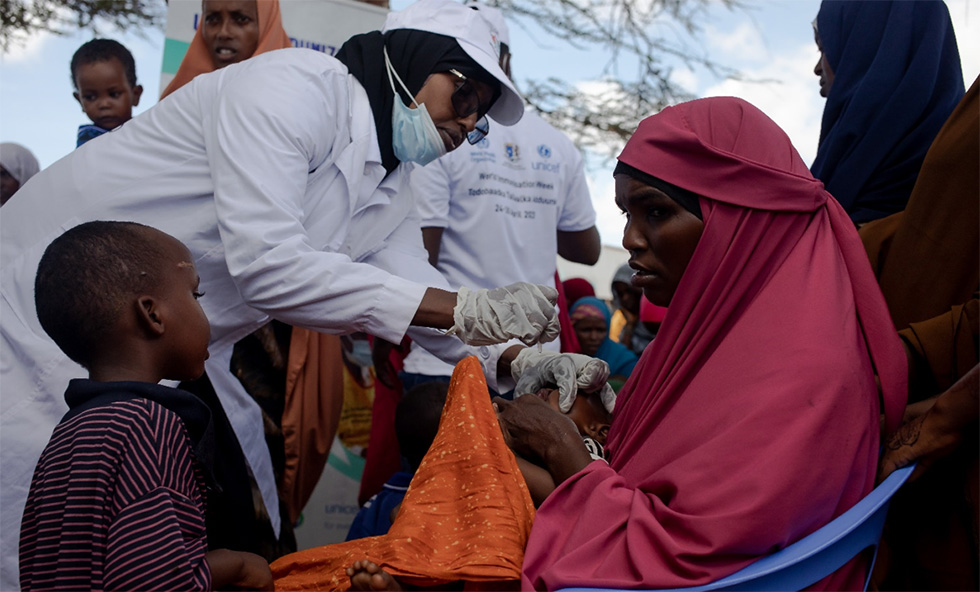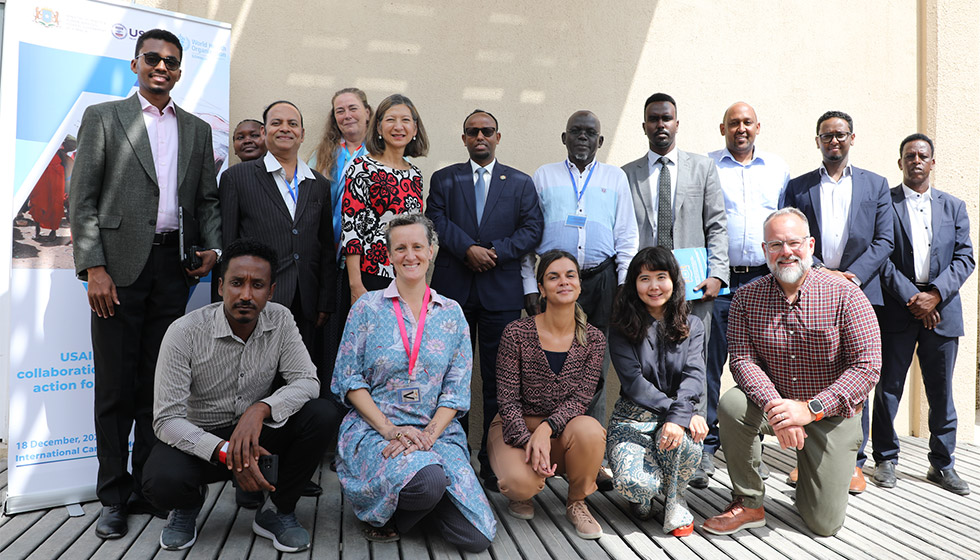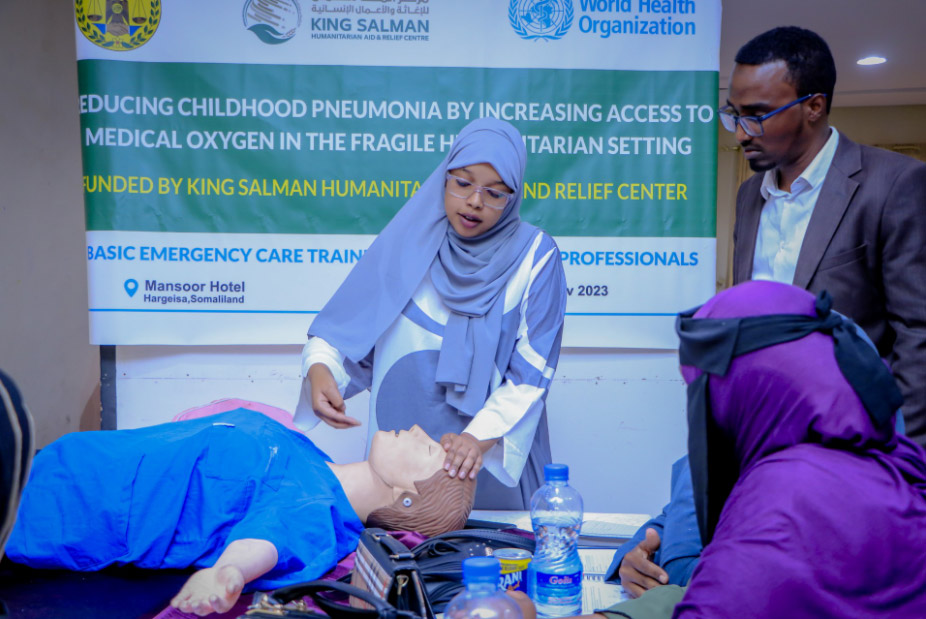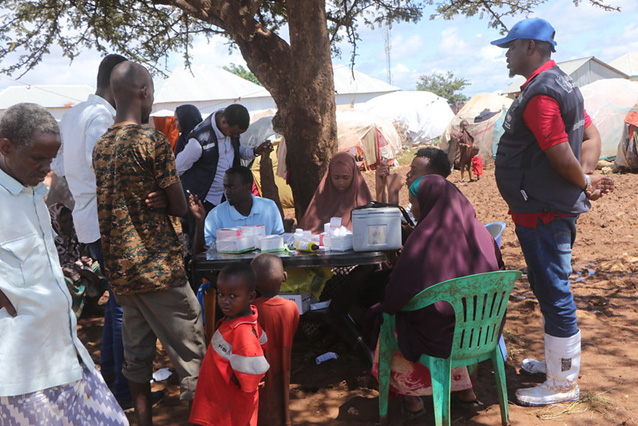 WHO–CERF support helped Somalia’s Federal Ministry of Health to set up outreach camps for flood-affected communities across Jubaland and Hirshabelle states. Photo credit: WHO Somalia/A. Mustaf08 February 2024, Mogadishu, Somalia – The WHO Country Office in Somalia, with timely support from the Central Emergency Response Fund (CERF), has helped to avert major diseases outbreaks after flash flooding caused by El Niño. The floods, which hit the country in November 2023, damaged infrastructure and affected the livelihoods and health of over 1.17 million people across Jubaland and Hirshabelle states.
WHO–CERF support helped Somalia’s Federal Ministry of Health to set up outreach camps for flood-affected communities across Jubaland and Hirshabelle states. Photo credit: WHO Somalia/A. Mustaf08 February 2024, Mogadishu, Somalia – The WHO Country Office in Somalia, with timely support from the Central Emergency Response Fund (CERF), has helped to avert major diseases outbreaks after flash flooding caused by El Niño. The floods, which hit the country in November 2023, damaged infrastructure and affected the livelihoods and health of over 1.17 million people across Jubaland and Hirshabelle states.
“The floods have swept away everything we had, but thanks to WHO, my 2 children have survived not only droughts and floods but are now recovering from severe malnutrition at the Kismayo General Hospital,” said the worried but satisfied Rasuliyan, mother of Haniya (aged 3 years) and Uthman (aged 4 years) while visiting one of 64 WHO-supported stabilization centres in the country.
To mitigate the impact of El Niño and the Indian Ocean Dipole, WHO Somalia – with the support from CERF – supported the federal and state ministries of health to boost their efforts to meet the growing needs of over 500 000 displaced people. It did so by deploying over 25 outreach teams – comprising 100 health workers in total: nurses, clinicians, social workers and nutrition screeners – and 130 community health workers (CHWs).
By the end of January 2024, the outreach teams had managed to reach 163 880 people, including 4148 pregnant women, in the most affected districts across the 2 states. They held 93 416 outpatient consultations, administered 23 145 vaccinations and referred 5418 people with severe medical ailments to more specialized care.
The WHO–CERF initiative has helped to equip and staff the stabilization centres at Kismayo General Hospital, Baardheere District Hospital, Beledweyne Hospital and Jowhar Hospital to support the management of cases of acute malnutrition with complications. These cases may be referred by the CHWs and the outreach teams or may be admitted via another entry point.
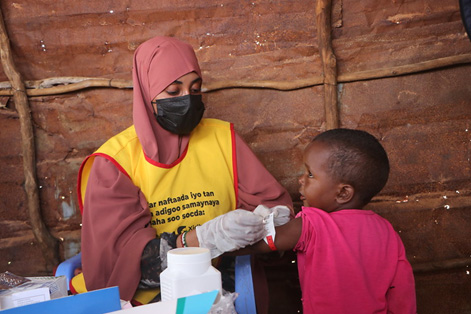 Outreach teams screened 33 767 children aged under 5 years, identifying 4833 children with severe acute malnutrition who were referred to outpatient therapeutic and stabilization centres. Photo credit: WHO Somalia/A. Mustaf“Of all the admissions in these stabilization centres, 95.9% were cured,” said WHO’s Incident Manager Dr Ifeanyi Okudo. He added that CHWs remain crucial as they administer micronutrient supplements within the displaced communities. By the end of January, they had reached 4148 pregnant women with iron and folic acid to prevent anaemia and birth defects. They also provided 4088 children with vitamin A supplements to boost immunity to diseases such as measles and pneumonia and to prevent blindness, which is common in malnourished children.
Outreach teams screened 33 767 children aged under 5 years, identifying 4833 children with severe acute malnutrition who were referred to outpatient therapeutic and stabilization centres. Photo credit: WHO Somalia/A. Mustaf“Of all the admissions in these stabilization centres, 95.9% were cured,” said WHO’s Incident Manager Dr Ifeanyi Okudo. He added that CHWs remain crucial as they administer micronutrient supplements within the displaced communities. By the end of January, they had reached 4148 pregnant women with iron and folic acid to prevent anaemia and birth defects. They also provided 4088 children with vitamin A supplements to boost immunity to diseases such as measles and pneumonia and to prevent blindness, which is common in malnourished children.
The 130 CHWs deployed in the affected communities also helped screen 33 767 children aged under 5 years for malnutrition using mid-upper arm circumference tape. This effort identified 4833 children with severe acute malnutrition, who were referred to outpatient therapeutic and stabilization centres for care.
The CERF support also helped WHO to procure 22 paediatric kits for children with severe acute malnutrition. These have been provided to the stabilization centres in the Kismayo General, Baardheere District, Beledweyne and Jowhar hospitals. The kits will be used to manage cases of acute malnutrition with complications referred to the centres by the CHWs and the outreach teams.
For more information, please contact:
Fouzia Bano, Communications Officer, WHO Somalia
Email:
هذا البريد محمى من المتطفلين. تحتاج إلى تشغيل الجافا سكريبت لمشاهدته.
Saeed Ahmed, Reporting/External Relations Officer, WHO Somalia
Email:
هذا البريد محمى من المتطفلين. تحتاج إلى تشغيل الجافا سكريبت لمشاهدته.
Related links





